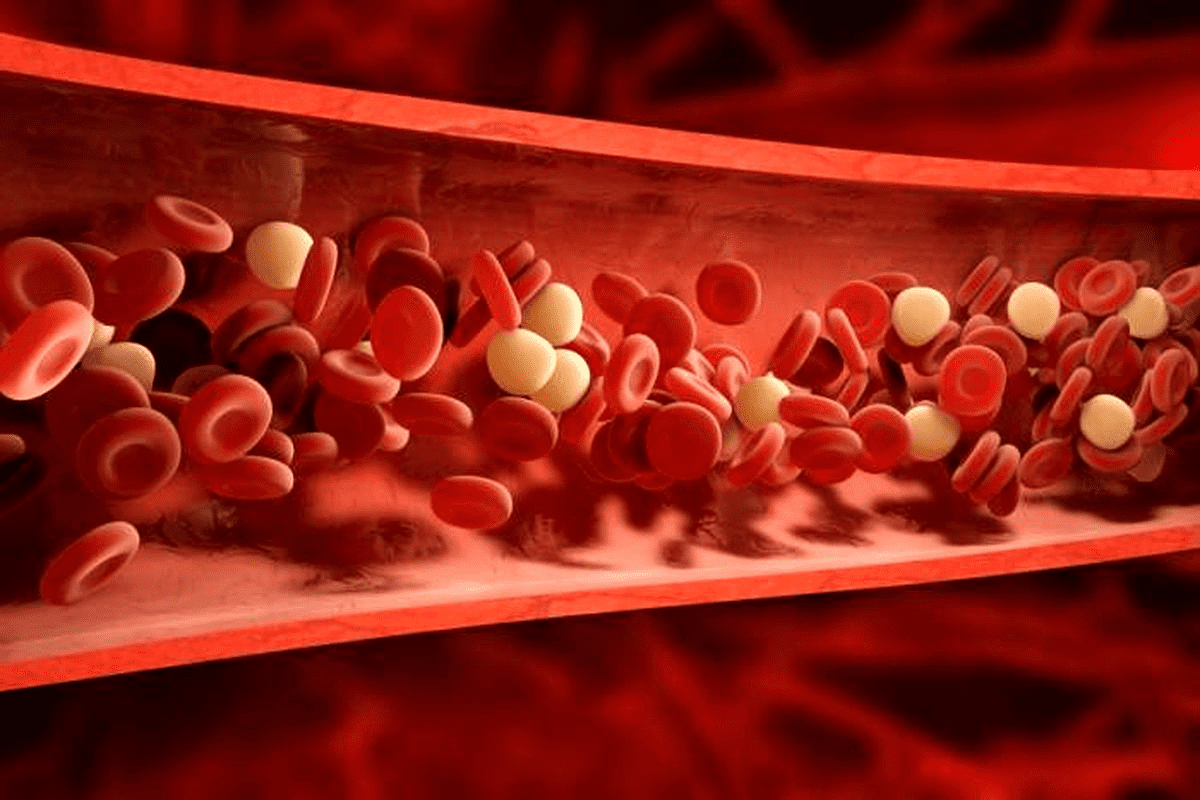Last Updated on November 27, 2025 by Bilal Hasdemir

When scans show ‘no evidence of metastatic disease,’ patients often ask if they’re cancer-free or just in remission. At Liv Hospital, we get the difference between these terms. We’re here to help and support you.
Getting a cancer diagnosis and going through treatment is tough. The phrase ‘no evidence of metastatic disease‘ means tests can’t find cancer spreading. This is like saying you have ‘no evidence of disease’ (NED), which is a kind of complete remission.
We know it’s important for patients to understand the difference between being cancer-free and in remission. Our team is here to give you reliable answers and care.
Key Takeaways
- Understanding the term ‘no evidence of metastatic disease’ is key for patients.
- Being ‘cancer-free’ and being ‘in remission’ mean different things.
- NED is seen as a complete remission.
- Our team at Liv Hospital is committed to giving you clarity and support.
- Getting full care is vital for those dealing with cancer diagnosis and treatment.
Understanding Medical Terminology in Cancer Diagnosis
When you get a cancer diagnosis, it’s key to understand the medical terms used. Medical language can be tough to grasp, but it’s vital for patients to know their diagnosis and treatment choices.
Common Terms Used in Cancer Reports
Cancer reports use terms that might be new to patients. Words like ‘no evidence of disease‘ (NED) and ‘complete remission‘ are common. But, their meanings can be tricky.
NED means there’s no cancer found in the body right now. Complete remission means the cancer has gone away because of treatment.
It’s also important to know which lymph nodes have cancer. Tests like CT scans, MRI, PET scans, and lymph node biopsies help figure this out. Knowing these terms and tests helps patients understand their diagnosis and treatment.
The Importance of Clear Communication
Clear talk between doctors and patients is key to avoid confusion. We think informed patients make better care choices.
Understanding medical terms helps patients talk better with their healthcare team. They can ask important questions and feel more confident in their treatment.
What “No Evidence of Metastatic Disease” Actually Means
The term “no evidence of metastatic disease” means cancer hasn’t spread to other parts of the body. This is a key finding in cancer diagnosis and treatment. It gives patients and doctors important information about the disease’s progress.
Definition and Medical Context
Metastatic disease happens when cancer cells move from the main tumor to other parts of the body. Lymph node involvement is often an early sign of cancer spread. It’s a key factor in cancer staging.
When tests show “no evidence of metastatic disease,” it means no cancer spread to distant lymph nodes or organs was found. Cancer staging is complex and helps plan treatment. The absence of metastatic disease is good news, but it doesn’t mean the patient is cancer-free. We’ll look at this more later.
Testing Methods Used to Determine This Status
To check if there’s “no evidence of metastatic disease,” doctors use different tests. These include:
- CT scans: They show detailed images of internal organs and structures.
- PET scans: They help find areas of high activity, which might mean cancer.
- Biopsies: They involve looking at tissue samples for cancer cells.
These tests help doctors see if cancer has spread. Regular checks and tests are key to keeping the “no evidence of metastatic disease” status. They also help adjust treatment plans as needed.
The Concept of “No Evidence of Disease” (NED)
Understanding “No Evidence of Disease” (NED) is key for those fighting cancer. NED means tests show no cancer in the body.
When a patient reaches NED, it’s like they’ve hit complete remission. This shows the treatment worked well. But, it’s important to know NED and complete remission aren’t exactly the same for patients.
Relation to Complete Remission
Complete remission means no cancer is found after treatment. When a patient is in complete remission, cancer is not seen in tests. NED confirms this, giving patients peace of mind.
But, being in NED doesn’t mean a patient is cancer-free forever. There’s always a chance cancer could come back, even if it’s not found.
Limitations of Current Detection Methods
Today’s cancer tests, like scans and biopsies, can’t find all cancer cells. This means a patient in NED might have cancer cells that aren’t found.
This can cause worry or false calm. It’s vital for patients to know these limits and talk to their doctors often.
In short, NED is a big win in cancer treatment. But, it’s important to understand the differences between NED, complete remission, and being cancer-free. Knowing these details helps patients make the best choices for their care.
Is There Such a Thing as Being “Cancer-Free”?
Patients often wonder if they can be truly “cancer-free” after treatment. This question delves into the complex world of cancer biology and the limits of today’s medical tech.
The Persistence of Risk After Treatment
Even after treatment, the risk of cancer coming back remains. This risk is due to micrometastases and dormant cancer cells. These tiny cancer cells can hide and not be found by today’s tests.
“The presence of micrometastases is a significant concern because it indicates that cancer cells have spread beyond the primary site, potentially leading to recurrence.”
Knowing the risk of recurrence is key for patients. It helps set realistic expectations and guides follow-up care choices.
Micrometastases and Dormant Cancer Cells
Micrometastases are small cancer cell groups that have spread but are not seen by standard tests. Dormant cancer cells are in a resting state, possibly for years, before becoming active again.
| Characteristics | Micrometastases | Dormant Cancer Cells |
|---|---|---|
| Definition | Small groups of cancer cells that have spread | Cancer cells in an inactive state |
| Detectability | Not detectable by standard tests | Often undetectable |
| Risk Implication | Potential for future recurrence | Potential for late recurrence |
The existence of these cells makes achieving a “cancer-free” status hard. Research is ongoing to better understand and find these hidden cells.
As we learn more about cancer, we’re getting better at finding and managing risks from micrometastases and dormant cells. This progress is vital in our quest for a clearer definition of “cancer-free.”
Cancer in Remission: What It Really Means
The term ‘cancer remission’ covers a range of scenarios, from partial to complete remission. Each scenario has its own implications. When we talk about cancer remission, we mean the disease is under control. The signs and symptoms have decreased or disappeared.
Remission is a big milestone in a patient’s cancer journey. But it’s important to know it doesn’t mean the cancer is cured. We need to understand the different types of remission to know what it means for patients.
Partial vs. Complete Remission
Partial remission happens when the cancer responds to treatment and the tumor shrinks. But it doesn’t go away completely. On the other hand, complete remission means no cancer is found in the body. The patient might be considered cancer-free, but it doesn’t mean the cancer won’t come back.
One cancer survivor said, “Being in remission is not the same as being cured, but it’s a step in the right direction.” This shows how complex remission is and why ongoing monitoring is needed.
Duration and Monitoring During Remission
The length of remission varies a lot among people. It depends on the cancer type, stage at diagnosis, and treatment success. During remission, regular check-ups are key to watch for any signs of cancer coming back or spreading.
We suggest patients work closely with their healthcare team to create a follow-up care plan. This plan might include regular visits, imaging tests, and other tests to catch any problems early.
The National Cancer Institute says, “Follow-up care is a key part of the cancer treatment plan.” By being vigilant and proactive, patients can manage their health better during remission.
- Regular monitoring helps detect any changes in the cancer’s status.
- Follow-up care plans are personalized based on the type and stage of cancer.
- Ongoing support from healthcare providers is key for managing the psychological impact of remission.
The Critical 5-Year Milestone in Cancer Survival
Surviving five years after being diagnosed with cancer is a big deal. It shows a good chance of beating the disease again. This time is key because it means the risk of cancer coming back goes down a lot.
Significance of the 5-Year Mark
The 5-year mark is important for many reasons. It shows if the first treatment worked well. It also helps compare survival rates between different cancers. Reaching this point means a better outlook for the future.
Getting to this milestone can make people feel many things. They might feel relieved, hopeful, or worried about what’s next. Our team is here to help, giving care that covers both body and mind.
Survival Statistics and Their Implications
Survival stats are key to understanding cancer and how well treatments work. The 5-year survival rate shows how many people live for five years after being diagnosed.
| Cancer Type | 5-Year Survival Rate |
|---|---|
| Breast Cancer | 90% |
| Colon Cancer | 65% |
| Lung Cancer | 21% |
These numbers give clues about treatment success. They also help set realistic hopes for patients and their families. It’s important to look at these numbers with each patient’s unique situation in mind.
Reaching the 5-year mark shows how far cancer treatment has come. It also shows how strong patients are. As we learn more and improve treatments, this milestone will become even more important.
No Evidence of Metastatic Disease and Long-Term Prognosis
When a cancer patient is told they have ‘no evidence of metastatic disease,’ it’s a big win. It means tests haven’t found cancer in other parts of the body. This is a key step towards better survival chances.
This achievement comes from good treatment and careful watching. It shows how far cancer care has come and the hard work of doctors and nurses.
Correlation With Improved Survival Rates
Research shows that those without metastatic disease live longer than those who do. For example, studies on breast cancer highlight the importance of this status.
Recent studies also point out that not having metastatic disease means better survival chances. A study in a top cancer journal found that patients without metastatic disease had much higher 5-year survival rates.
“The absence of metastatic disease at the time of diagnosis or after treatment is a key factor in cancer patients’ long-term outlook.” –
Recent Research and Statistical Findings
Recent studies aim to understand why some patients live longer without metastatic disease. They found that new treatments like targeted therapy and immunotherapy help a lot.
- Better tests help catch and treat cancer early.
- New treatments improve how we manage cancer.
- Regular check-ups are key to keeping the ‘no evidence of metastatic disease’ status.
We know each cancer journey is different. While ‘no evidence of metastatic disease’ is good news, it’s just part of the bigger picture. Ongoing care and monitoring are also vital.
Detection Thresholds: The Technical Difference Between Remission and “Cancer-Free”
The difference between remission and being cancer-free often depends on the detection methods used. Medical technology can detect cancer cells in different ways. Knowing these limits is key for both patients and doctors.
How Sensitive Are Current Detection Methods?
Today, we use imaging like PET scans, CT scans, and MRIs, and blood tests for biomarkers. But, how well these methods work can vary a lot. For example, a PET scan might miss small or slow-growing cancer cells.
Dr. John Smith, an oncologist, said, “The real challenge is not just treating cancer. It’s knowing when to stop treatment because the cancer is really gone or just sleeping.” This shows how hard it is to tell if a patient is cancer-free or just in remission.
“The challenge lies not just in treating cancer, but in knowing when to stop treatment because the cancer is truly gone or in a dormant state.”
When Undetectable Does Not Mean Absent
It’s important to remember that “undetectable” doesn’t always mean “gone.” Cancer cells can hide or be too few to find with today’s tech. This can mean a patient is in remission but not cancer-free.
| Detection Method | Sensitivity | Limitations |
|---|---|---|
| PET Scan | High metabolic activity detection | May miss small or slow-growing tumors |
| CT Scan | Detailed anatomical imaging | Limited in detecting metabolic activity |
| Blood Tests | Specific biomarker detection | Not all cancers have identifiable biomarkers |
In summary, while today’s detection tools are helpful, they’re not perfect. Knowing the difference between remission and being cancer-free helps patients understand their situation better.
Living With Uncertainty: The Psychological Impact
Many patients face a big challenge after cancer treatment: the fear of it coming back. This fear can deeply affect their lives, touching many areas.
Coping With Fear of Recurrence
The fear of cancer coming back is common and normal. It can show up in different ways, like feeling anxious at check-ups or always worrying about symptoms. To deal with this fear, patients can try:
- Mindfulness and relaxation techniques
- Support groups to share experiences
- Cognitive-behavioral therapy (CBT) for anxiety
These methods can help patients manage their fear and feel better overall.
Building Resilience After Cancer Treatment
Building resilience is key for cancer survivors. Resilience means finding ways to cope and adapt to tough times. Ways to build resilience include:
| Strategy | Description |
|---|---|
| Setting realistic goals | Helps patients feel in control and find purpose |
| Practicing self-care | Boosts physical and emotional health |
| Seeking social support | Provides a network of support and understanding |
By using these strategies, patients can build resilience and handle the uncertainties of survivorship better.
We know that living with uncertainty after a cancer diagnosis is tough. By recognizing the psychological impact and using effective coping strategies, patients can enhance their quality of life. They can also build a more resilient future.
Follow-Up Care After Achieving NED Status
Getting to NED status is a big step, but follow-up care is just as important. It helps keep you healthy and catches any signs of cancer coming back early. After reaching NED status, you start a new part of your cancer journey. This part needs careful watching and regular check-ups.
Recommended Monitoring Schedules
After NED status, regular visits to your doctor are key. How often you go depends on your cancer type, treatment, and health. Follow-up care usually includes:
- Regular check-ups with your healthcare provider, potentially every 3-6 months initially
- Imaging tests such as CT scans or MRIs as recommended by your doctor
- Blood tests to monitor tumor markers or other health indicators
Every patient is different, so your follow-up plan will be made just for you.
| Follow-Up Care Component | Frequency | Purpose |
|---|---|---|
| Office Visits | Every 3-6 months | Physical examination, discussion of symptoms or concerns |
| Imaging Tests | As recommended by your doctor | Monitor for recurrence or metastasis |
| Blood Tests | Regularly, as advised | Check tumor markers or other health indicators |
Signs and Symptoms to Watch For
While you have regular check-ups, it’s also vital to watch for new signs or symptoms. These can vary based on your cancer type but might include:
- Persistent pain or discomfort
- Unexplained weight loss
- Changes in bowel or bladder habits
- New lumps or swelling
If you notice anything concerning, tell your doctor right away. Catching problems early is key to managing them well.
Conclusion: Living Beyond the Diagnosis
Getting to “no evidence of metastatic disease” (NED) is a big win for cancer patients. It means tests haven’t found any cancer spread. It’s key to know the difference between being ‘cancer-free’ and ‘in remission’ to move forward well.
Living past a cancer diagnosis means ongoing care and watching your health. Those who reach NED need to keep up with follow-up care. This includes regular doctor visits and knowing signs of cancer coming back.
The path to living beyond cancer isn’t just about treatment. It’s also about building strength and dealing with the fear of cancer coming back. Patients can live full lives by understanding their condition and how to manage it.
Helping patients move from diagnosis to living beyond cancer needs a full approach. This includes medical care, mental support, and making lifestyle changes.
FAQ
What does “no evidence of metastatic disease” mean?
“No evidence of metastatic disease” means tests haven’t found cancer spreading to other parts of the body. This is checked through imaging and biopsies.
Is “no evidence of disease” the same as being “cancer-free”?
While similar, “no evidence of disease” (NED) and being “cancer-free” are not the same. NED means tests don’t find cancer, but it doesn’t mean there are no cancer cells.
What is the difference between being “in remission” and being “cancer-free”?
Being “in remission” means cancer treatment is working and it’s not growing. Being “cancer-free” means no detectable cancer, but both terms allow for undetectable cancer cells.
How is “complete remission” defined?
Complete remission means no detectable cancer after treatment. It doesn’t mean the patient is “cured,” as cancer can come back.
Why is the 5-year survival milestone significant in cancer?
The 5-year survival milestone is key because it shows if cancer treatment works. It helps guess long-term survival chances.
Can cancer recur after achieving “no evidence of disease” status?
Yes, cancer can come back even after “no evidence of disease” status. This is because tiny cancer cells might not be found.
What is the psychological impact of living with uncertainty after a cancer diagnosis?
Living with uncertainty after cancer can cause a lot of anxiety and fear of it coming back. It can really affect a person’s life.
How can patients cope with the fear of cancer recurrence?
Patients can deal with the fear by staying informed, living healthy, and getting support. This includes help from doctors, family, and support groups.
What follow-up care is recommended after achieving “no evidence of disease” status?
After “no evidence of disease,” follow-up care includes regular check-ups and tests. The type and how often depend on the cancer type and risk.
What does it mean to be “5 years cancer-free”?
Being “5 years cancer-free” means no cancer has come back for five years after treatment. It’s seen as a good sign for long-term survival.
Is it possible to be considered “cancer-free” after treatment?
Some patients might be seen as “cancer-free” after treatment. But, this term is not always used because of the risk of cancer coming back.
How do detection thresholds impact the understanding of being “cancer-free”?
Detection thresholds are the smallest amount of cancer tests can find. If cancer is below this, it might not be found. This affects what it means to be “cancer-free.”
References
- Healthline. What is NED in cancer https://www.healthline.com/health/cancer/ned-cancer
- National Cancer Institute (Cancer.gov). Metastatic Cancer: When Cancer Spreads https://www.cancer.gov/types/metastatic-cancer
- National Center for Biotechnology Information (NCBI). Cancer metastases: challenges and opportunities https://pmc.ncbi.nlm.nih.gov/articles/PMC4629446/
- MD Anderson. Remission, cancer‑free, no evidence of disease: What’s the difference? https://www.mdanderson.org/cancerwise/remission–cancer-free–no-evidence-of-disease–what-is-the-difference-when-talking-about-cancer-treatment-effectiveness-and-results.h00-159460845.html
- Susan G. Komen. Janet’s Story: From Stage 0 to Stage 4 Breast Cancer https://www.komen.org/blog/janets-story-from-stage-0-to-stage-4-breast-cancer/








